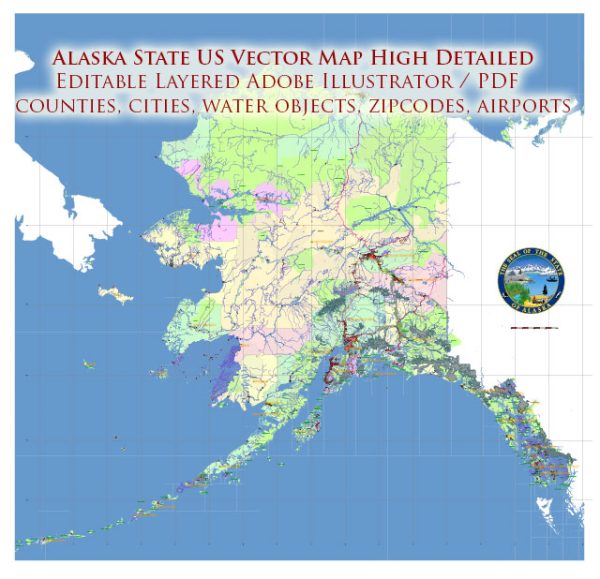Economy of Alaska
The Alaskan economy is conditioned strongly by the state’s continuing status as a frontier.
While the high costs of labour and transportation and complicated environmental and land-use constraints
still tend to discourage outside investment, major improvements in infrastructure have lowered the costs
of economic transformation significantly. The problem of the state’s inadequate tax base was remedied by
the discovery in 1968 of the North Slope oil fields, which led to the creation of the Trans-Alaska Pipeline,
thereby creating jobs and increasing revenue for the state. Alaska’s present-day economy is based on oil production,
fishing, federal and state (both civilian and military) expenditures, research and development, and tourism.
Agriculture, forestry, and fishing
More than 3 million acres (1.2 million hectares) of potentially tillable land exists in Alaska,
but only a small portion of the state’s economy is agricultural, and most foods must be imported.
The state government promoted agricultural expansion in the 1970s, but the amount of cultivable land
brought into production was small, and no major expansions have been made since then. Commercial farming
(including the growing of barley and potatoes, as well as the raising of cows and pigs) is concentrated
in the Matanuska-Susitna valley, which lies north of Anchorage, near the town of Delta Junction,
which is southeast of Fairbanks, and to a lesser degree in the Kenai Peninsula.
There is also considerable small-scale farming in the Fairbanks area itself, where vegetables,
potatoes, and various grains grow rapidly because of the long hours of summer sunlight.
There is some livestock raising on Kodiak Island. Sheep are raised on Unimak Island,
and caribou are raised for local consumption in the Kotzebue region. Alaska also produces
feed for the increasing number of horses kept in the state for recreational use and for hunting and guided trips.
American bison (buffalo), originally imported, are sometimes harvested in the Delta Junction region.
Hunting, particularly of moose and caribou, as well as fishing and whaling in the Beaufort and Chukchi seas,
plays a major role in the subsistence economy of Indigenous peoples.
Most of Alaska’s commercial timber resources are in the Tongass and Chugach national forests—respectively,
in the panhandle and on the southern coast. Due to logging regulations, which restricted timber leases,
the pulp mills in Sitka and Ketchikan closed in the 1990s, and Alaskan timber and forestry-related activities
and exports were significantly reduced. Efforts to establish an export forestry industry in the
Tanana Valley have been unsuccessful.
Alaska: commercial fishing
Alaska’s commercial fishing economy is one of the country’s most significant, and the port of Kodiak is one of the
largest fishing ports in the United States. Most of Alaska’s fish production is exported. Salmon of various
species are of special importance; the centres of the world’s salmon-packing industry are at Ketchikan,
on Kodiak Island, in the city of Unalaska, in Bristol Bay, and in Prince William Sound.
Commercial fishing fleets also bring in significant quantities of herring, cod, pollack,
and halibut, as well as Dungeness, king, and Tanner crabs. International fishing in Alaska’s
waters is regulated by the 200-mile- (320-km-) wide exclusive economic zone and the U.S.-Canadian
Pacific Salmon Treaty (1985) as well as by U.S.-Russian cooperation over control of the Bering Sea
fisheries. Oysters and clams are harvested on aquatic farms.
Source: https://www.britannica.com/place/Alaska


 Author: Kirill Shrayber, Ph.D.
Author: Kirill Shrayber, Ph.D.